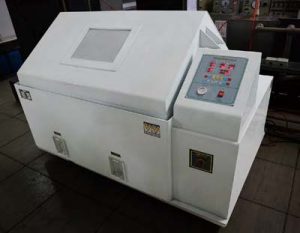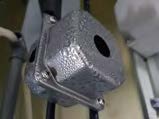Main properties of usual stainless steels
1. Stainless steel raw material
| Designation | Nearest equivalences | Specific gravity (g/cm3) | HRB hardness | Tensile
Strength, Stress, N/mm2 |
Elongation, % |
| Aisi 304L | SUS304L (JIL) X2CrNi1811 1.4306 (DIN) Z3CN18-10 (NF) 02Cr18Ni11 (GB) S30403 (ASTM) |
7.93 | <92 | >485 | >40 |
| Aisi 316L | SUS316L (JIL) X2CrNiMo17132 1.4404 (DIN) Z3CND17-12-02 (NF) 02Cr17Ni12Mo2 (GB) S31603 (ASTM) |
7.98 | <95 | >485 | >40 |
Composition
| C | Si | Mn | P | S | Ni | Cr | Mo | |
| SUS 304L | ≤ 0.03% | ≤1.00% | ≤2% | ≤0.045% | ≤0.030% | 9.00-13.00% | 18.00-20.00% | – |
| SUS 316L | ≤ 0.03% | ≤1.00% | ≤2% | ≤0.045% | ≤0.030% | 16.00-18.00% | 12.00-15.00% | 2.00-3.00% |
Main applications
| AISI | Overview | Usable in contact with: | Not usable in contact with: |
| AISI 304 | Can be used in contact with water or humid environment. It is the cheapest material mentioned in this list. | -Fresh water and natural atmosphere with low chloride content. – Nitric acid up to 52% at all temperatures and 98% cold: 304 or 304L stainless steel resists it particularly well, due to the passivation of its surface. 316L should be used if nitric acid contains impurities. – Organic acids diluted and cold. – Alkaline solutions: the cold solutions have practically no action but it is not the same for concentrated and hot solutions. – Saline solutions not containing chlorides, sulphides and sulphates. – Food products: generally no corrosion problem except with some products that contain sulfur. |
-Hydrochloric acid: corrosion increases steadily as the concentration increases. – Chlorinated and hot products. – Bleach at over 60°C and at a high concentration. – Nitric acid mixed with saturated brines. – Saline solutions containing chlorides, sulphides and sulphates. – Food products containing sulfur, such as mustard and white wines. |
| AISI 304L | The low carbon content (< 0,03 %) provides better intergranular corrosion resistance after TIG welding than 304. Same chemical resistance than 304. | Similar to AISI 304 | Similar to AISI 304 |
| AISI 316L | Excellent resistance to corrosion. The presence of molybdenum enhances chloride resistance by increasing the stability of the superficial passivation layer. The low carbon content (<0.03%) ensures excellent resistance to intergranular corrosion especially after TIG welding. Use in the presence of saline or saline water, and marine environment. |
-Marine and industrial atmospheres. – Phosphoric acids at all concentrations up to 40°C. – Sulfuric acids less than 10% and more than 80% at 20°C. – Sulphonic mixtures up to 70°C – Sulphurous solutions and vapors, even boiling. – Saline solutions except chlorides. – Alkaline solutions all concentrations below 100°C. – In general: Organic, food and pharmaceutical products. |
– Hydrochloric acid: corrosion increases steadily as the concentration increases. – Chlorinated and hot products. – Bleach at over 60°C and at a high concentration. – Nitric acid mixed with saturated brines. |
Resistance to atmospheric corrosion
- The resistance to atmospheric corrosion being improved by a polished surface, the standard finish of the enclosures consists of polishing by vibrations in the last manufacturing
- All hardware is in stainless steel to avoid electrochemical
- Submitted to a 5% salt spray corrosion test, according to the ASTM 117 standard, the enclosures in Aisi 304 and Aisi 304L do not show any trace of corrosion after 1000 hours, and those in Aisi 316L after 2000 hours.
Salt spray testing of enclosures in our laboratory
 |
 |
Galvanic corrosion of stainless steel enclosures
- Galvanized steel in contact with stainless steels is not normally considered to be a serious corrosion risk, except possibly in severe (marine type)
In these situations, precautions such as insulating barriers are usually considered adequate to avoid bimetallic corrosion in most practical situations.
Stainless steel Rohs compliance
According to the Directive 2011/65/ dated June 8, 2011 (Rohs), stainless steel alloys are allowed to have a maximum of 0.1% by weight of lead, lead, mercury, hexavalent chromium, PBB (Polybrominated biphenyls), PBDE (Polybrominated Diphenyl Ethers) and 0.01% of Cadmium in weight. (Provisions of Article 4 and paragraph 1 of Annex II)
